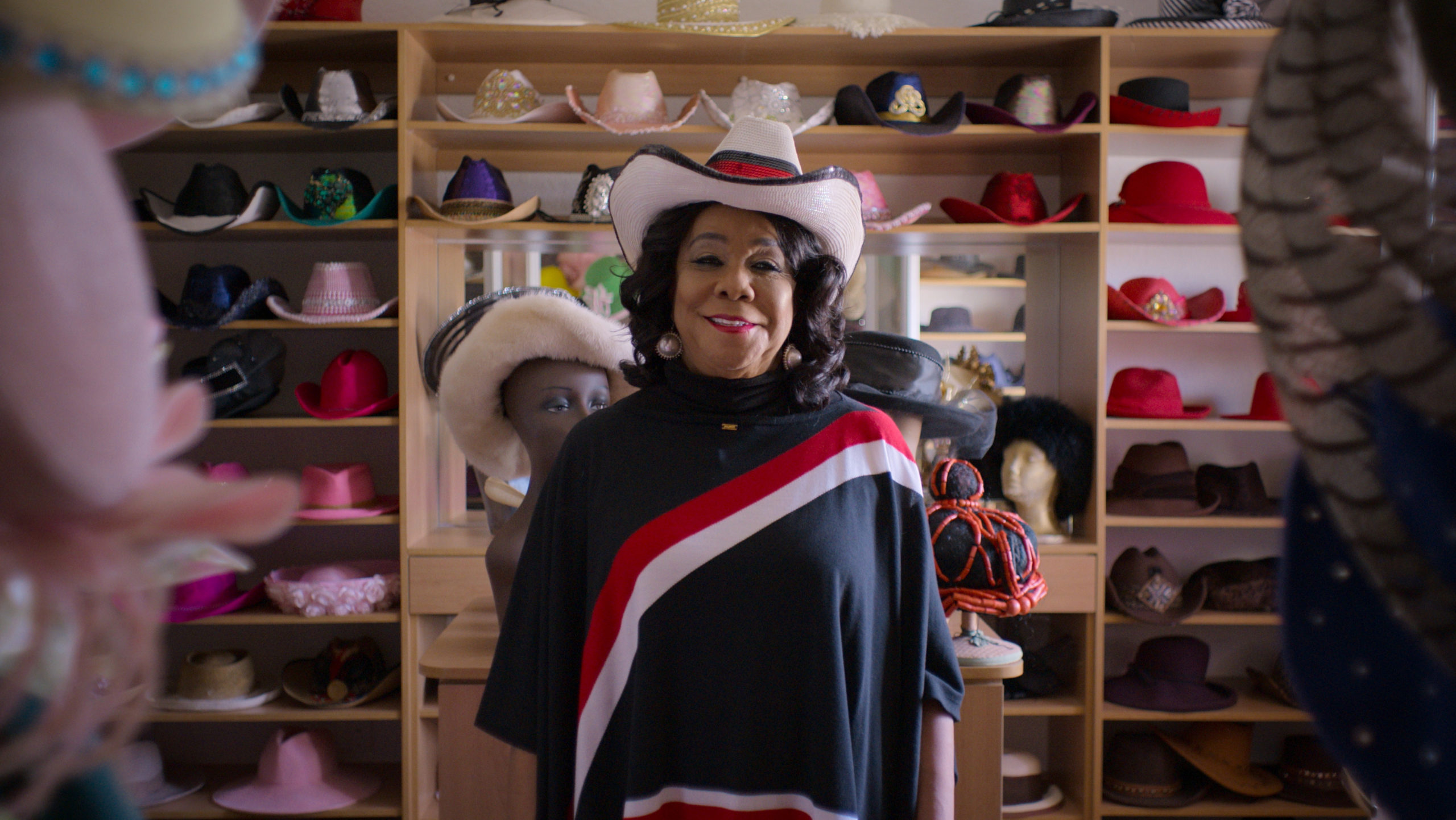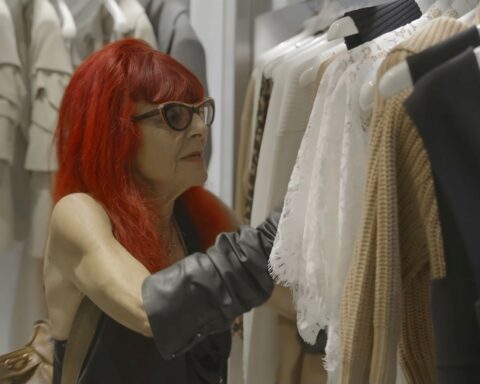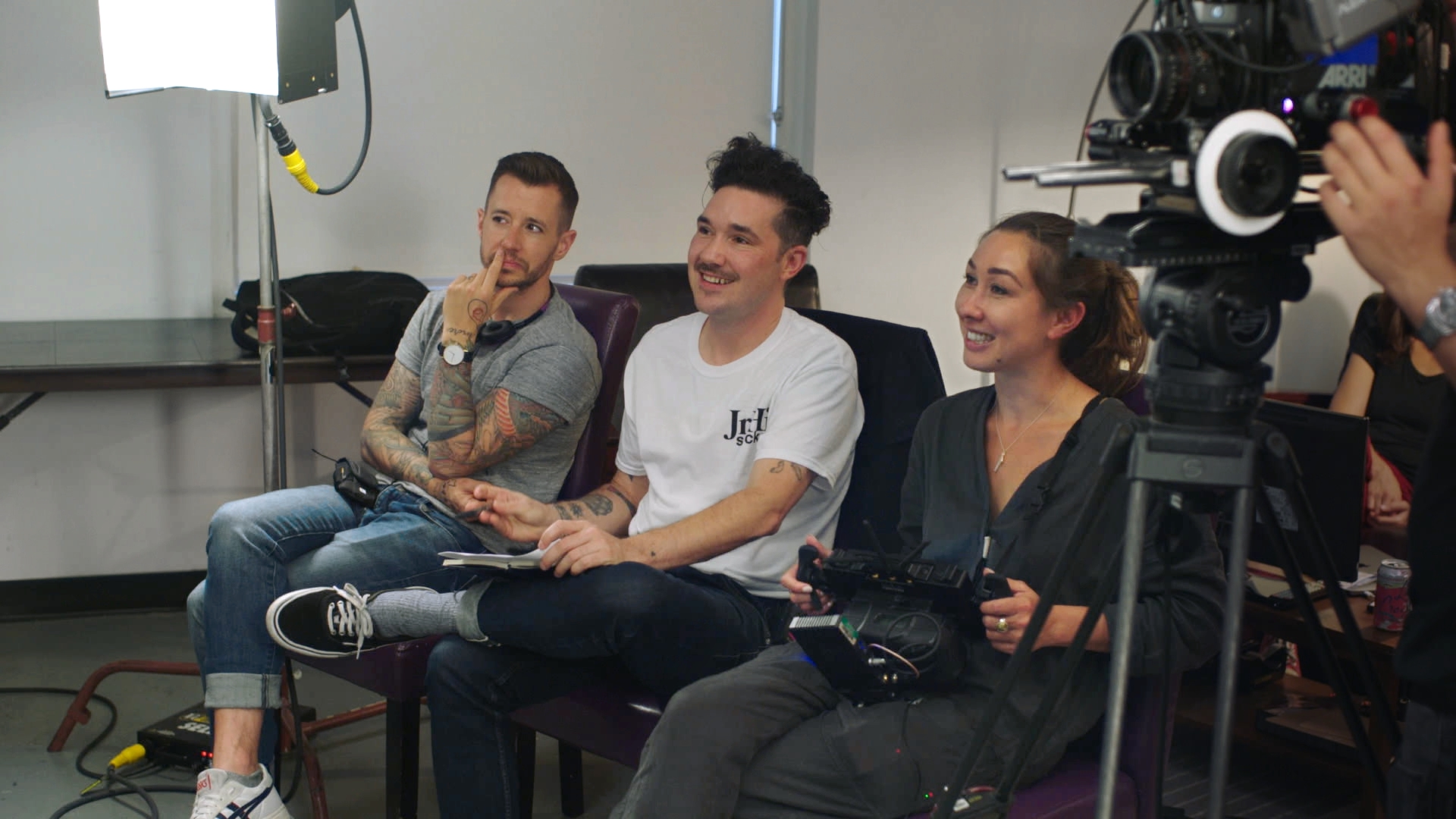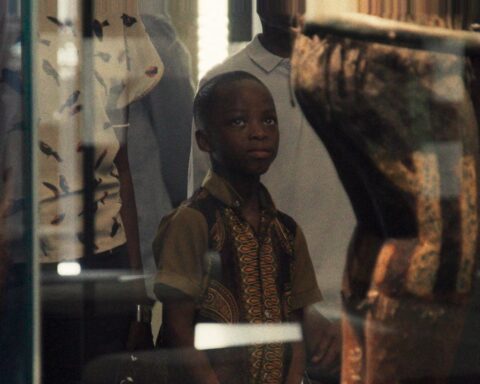Worn Stories
(USA, 8 × 30 min.)
Dir. Dara Horenblas, Ted Passon, Claudia Woloshin
Clothes offer warmth, comfort, and style, but they also hold memories, connote status, and carry social codes. The garments that provide daily character and fashion receive greater consideration through a chorus of personal reflections and anecdotes in Worn Stories. The Netflix limited series, which credits Oscar winner Morgan Neville and Orange Is the New Black creator Jenji Kohan among its executive producers, adopts the popular book and blog by Emily Spivack in a bright and engaging look at the articles of clothing that hold unique meanings for different Americans. Worn Stories spins a new yarn with killer lewks in the sea of chic fashion docs: the study is not so much one of style but the significance that articles of clothing hold.
The series structures its inquiry thematically across eight episodes. Subjects appear in interviews shot against brightly draped backdrops—unique fashion shoots, if you will—as they display an item of clothing and unpack its story. Although the breezy, conversational approach is consistently engaging, it’s admittedly a bit all-over-the-map stylistically as episodes feature a scattered array of animated sequences to accompany the stories. (Sometimes not at all if there’s enough location footage.) These animated moments, which were added as a mid-pandemic remedy when shooting in the field proved impossible, are offbeat fun. They are like the patches that keep a pair of well-worn jeans from falling apart.
The episodes centre on themes of community, acceptance, beginnings, growth, uniforms, chance, survival, and love, although there is continuity between the discussions as some of the ideas inevitably overlap. Each installment is like a journey through the closet, opening the doors and sliding garments across a rack item by item, considering the meaning each item signifies. Worn Stories offers a notably inclusive consideration of a field that can be restrictive and exclusive. The series is especially considerate of LGBTQ stories with each episode featuring tales of belonging, community, and survival from confidence-boosting clubwear to stylish aerobics pants that helped a wearer make it through the peak of the AIDS crisis.
The pieces of clothing differ by episode. Some are perfectly bland and others are super sexy. Some items are vintage favourites while others let characters define themselves anew. Perhaps most surprisingly, Worn Stories begins by considering the joy of wearing one’s birthday suit. The first episode whisks viewers to a nudist community in Kissimmee, Florida. Naturalists Diane and Paul describe the pleasure of letting it all hang out, wearing nothing but crocs and sandals, even in their woodworking shop. Their community, which mostly consists of retirees but has a few youngsters, actually makes a novel set-up for the doc series. Clothes play a considerable role in announcing social codes and norms. The rules stitched to clothes can be restrictive and limiting as they make others feel uncomfortable or second-tier citizens, like the former inmates in the series who discuss the stigma associated with prison uniforms.
Clothes can be empowering too, in many different ways. Worn Stories offers relatable anecdotes as interviewees reflect upon the items that make them feel good and give them confidence. A range of garments that hold this power and many of the articles of clothing featured in Worn Stories relate to feelings of community and acceptance. It could be a cushy sweater like the one that makes Mrs. Park poised to strut her stuff in dance class, or the uplifting jockstrap that gives a self-described vanilla hustler like Matt the confidence to embrace his sexuality (for profit, no less!) after fleeing the repressive mores of Alaska.
Worn Stories also finds tails of trailblazers who assert their individuality through the way they dress. One notable story features a character named Spirit, a non-binary Jewish teen who seeks the perfect outfit for their B’nai Mitzvah. They boldly take a step forward for progressive ideals and repurpose the name of their community’s coming of age ceremony in a gender-neutral term. Alternatively, Congresswoman Frederica Wilson dons a number of loud hats, including a blood red cowboy cap that really pops, to show how one can create space for oneself by proudly standing out from the crowd. Her sequence in the series’ fifth episode is a highlight.
Most of the characters in Worn Stories are everyday people with off the rack items and hand-me-downs. However, some episodes feature recognizable names to add some novelty to the ensemble. Saxophonist Timmy Cappello, for example, shows off the bulging codpiece endowed to him by Tina Turner. He tells how the Queen of Rock gave him the gift during the days when he played in the band, marvelling at her suggestion that he could be the bad boy of the group. He still wears the codpiece and credits it for reviving his career as the industry changed and traditional musicians fell by the wayside as artists favoured synthetic accompaniment.
Actress and singer Charo, meanwhile, pops up late in the series and credits her sisters for making the stylish dresses that lifted her bosom and star status alike. There’s even an appearance by Tommy Oliver, whom doc fans might have encountered in 40 Years a Prisoner . He and his mother share the quilt she made for him in prison after receiving a life sentence when the MOVE organization of which she was a member was targeted by police. It’s unexpected to see this family item stitched together from clothing worn by women who raised Tommy in his mother’s absence.
although some moments like Tommy’s offer more gravity, the series offers light entertainment and the company is a lot of fun with their observations. One can tune in or tune out of the series—it caters well to both binge-watching and casual viewing—and its Instagrammable aesthetic speaks to a generation of audiences who are accustom to spinning tales with their favourite looks. It’s engagingly breeze with nuggets of personal insight and humour of all sizes.
The best stories, however, are the ones in which clothes are merely a vehicle for a good yarn. Anecdotes of shared experiences and overcoming pain, for example, offer Worn Stories its greatest insights. For me, the highlight of the series is a memory of one fateful night shared by two cousins united on a quest to retrieve a beloved one-of-a-kind coat that was given away mistakenly at a restaurant coat-check. The cousins recall with animated vigour the odyssey that took them across town with the help of location trackers and a few too many glasses of wine. The pleasure here is not the world of clothes, but the world of the wearers, and the occasions that inspire us to dress our best.
Worn Stories debuts on Netflix April 1.














